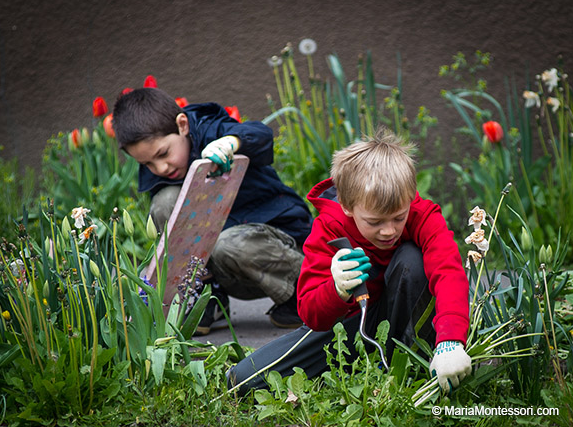
Outside my bedroom windows, along the back property line where my neighbor’s yard begins, I can see the four cherry laurel trees we planted a few years ago. Three of them are flourishing – getting tall and treelike – while the fourth is not doing so well. It is not as tall as the others and is skimpy in the canopy. It’s not its fault. When we planted these trees we were not terribly discerning about the location. The gardener helping us said that the laurels should do well whether in the sun or shade. So we planted them in an offset row across the back of our yard to serve as screening. We hadn’t taken into account the future growth of all the surrounding trees that now cast that part of the yard into deep shade, where the fourth laurel lives.
The trees came with ‘instructions’ – hidden potential with everything needed to become cherry laurels we could one day count on to screen the back of our property. But the environment in which they grow varied enough that one of the four has not lived up to its potential of tree shading.
Nurture and Nature
The environment is nurture; the child in his raw form is nature. There is little or perhaps anything we can do to alter the child’s nature but there is everything we can do to provide the appropriate nurture that nature needs to reach potential and beyond through the environment we provide.
Maria Montessori was very clear about the importance of the environment young children need during the years of their Absorbent Minds and Sensitive Periods. She presented a clear blueprint for the role of the Prepared Environment and the role of the adult in that environment. According to Standing (“Maria Montessori: Her Life and Work”):
“If there is one feature more than another which should characterize the prepared environment it is ordered.”
“It is hardly too much to say that the way in which the directress (adult) preserves the order in the prepared environment – or not – will largely depend on the success or failure of her class.”
“What Montessori has done is this: realizing the peculiarly absorbent nature of the child’s mind, she has prepared for him a special environment; and, then, placing the child within it, has given him the freedom to live in it, absorbing what he finds there.”
“If the teacher (adult) and the children all migrated to another room – leaving the prepared environment – these new relationships would vanish, and with them the inter-related function of the absorbent mind in the prepared environment.” (the Guide/Adult – Children- Environment triangle)
“In this environment, only those things are allowed to be present which will assist development. Out of it must be kept anything that would act as an obstacle – not least a too interfering adult. Even such things as are neutral or irrelevant should be rigorously excluded. The constructive psychic energy granted by nature to the child for building up his personality is limited; therefore we must do everything we can to see that it is not scattered in activities of the wrong kind.”
It is clear – we work with the child nature through the nurturing environment – tirelessly and consistently through its upkeep and preparation. This is our role of love, and the environment reflects this love in its readiness (preparedness) to support the child’s nature. It is through the environment that the adult has any influence on the developing child’s nature.
Standing further states
“Practical Rules for the Teacher (or adult) in Relation to the Environment”:
- Scrupulous care of the environment: keep it clean, tidy, spick and span.
- Paint again, sew again, when necessary: beautify the house.
- Teach the use of objects; and show the way to do the exercises of practical life (this must be done calmly and graciously and exactly, so that all the children will do the same).
- Put the child in touch with the environment (active) and when this is achieved she becomes passive.
- Observe the children continuously so that she may not fail to see who needs support.
- Hasten when called.
- Listen and respond to the child’s appeals.
- Respect and not interrupt the worker.
- Respect and never correct one who is making a mistake (“teach, teaching, not teach correcting”).
- Respect one who is resting and watching the others work without disturbing him or obliging him to work . . .
- But she must be tireless in offering subjects again to those who have already refused them, and in teaching those who have not yet learned, and still make mistakes.
- By her care and intent silence she must animate the environment: also by her gentle speech and presence – as one who loves.
- She must make her presence felt by those who are seeking, and hide from those who have already found.
- She becomes invisible to those who – having finished their work carried out by their own effort – are offering up their work as a spiritual thing.
Ours is one of service to the child’s nature through loving care of the environment in which he spends his day of development, day after day, be it in the home or in the school. This is the love we show the child – the respect and honor we afford the developing, creative nature and raw potential of the child. It is our partnership with him in this creative endeavor.